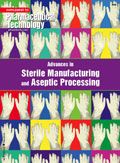Comparison of Conventional Cleanrooms, Restricted Access Barrier Systems, and Isolators
A comparison of conventional cleanrooms, restricted access barrier systems, and isolators, shows the benefits of using isolators in high-potency drug manufacturing.
The use of isolators has grown with the correspondent increase in the discovery and use of high-potency drugs. Isolators provide the best protection for operators and the high sterility-assurance level of injectable products. The fully isolated system provides total containment for all material handling with the highest capital costs offset by lower operating costs. The advantages offered by isolators compared with traditional or conventional cleanrooms is pushing the industry to choose isolator technology for future investments in high-potency manufacturing. Outlined below are different features of conventional or traditional cleanrooms, restricted access barrier systems (RABS), and isolators.
Initial facility costs
The costs for conventional cleanrooms are well-defined, and costs for engineering and heat, ventilation, and air-systems conditioning systems can be substantial. RABS have higher costs compared with cleanrooms and have more equipment-related costs. Isolators typically have more costs for the principal installation (1).
Qualification
The time for qualification for cleanrooms, RABS, and isolators is typically six to nine months. There are no particular problems in qualifying cleanrooms. Qualification of RABS may theoretically avoid some of the issues relating to qualification of isolators. Longer periods for qualifying isolators are reflective of additional requirements rather than technical hurdles (1).
Operating costs
Operating costs for RABS are higher than those for cleanrooms. Isolators also have higher operating costs than cleanrooms, but there can be cost-savings in gowns, supplies, and environmental monitoring. Isolators, however, may have additional costs for vaporized hydrogen peroxide and the time used for biodecontamination (1).
Environmental conditions
Isolators are basically much smaller environments than traditional cleanrooms. The airflow inside an isolator for aseptic production has to be filtered in an absolute manner. The expelled or retaken air inside isolators for containment has to be filtered for dust and airborne aerosols.
The absence of personnel and consequently the microbiological contamination brought in by those operators suggest that the air speed and scheduled exchanges in an isolator may be lower than in a cleanroom. A minimum of 20 exchanges per hour inside isolators is suggested.
Thermohygrometric conditions also have to be considered in the impact of biodecontamination and its efficiency. The choice of these parameters inside isolators for aseptic production is influenced by such qualification and by the fact that inside biodecontaminated isolators, there are not conditions that favor the growth of microorganisms on substratum used for production and process control.
Biodecontamination
In cleanrooms, there are classified and only-sanitized areas, where the operator intervenes physically, and therefore, in a limited manner brings in contamination.
A completely biodecontaminated environment exists inside an isolator. Only the drug and the material for manufacturing come in direct contact with the processing system. In such operating conditions, microbial contamination is less than under cleanroom conditions because of the absence of direct human intervention, thereby ensuring higher cleaning and the complete biodecontamination of the whole working environment. In contrast to cleanroom processing, the complete biodecontamination with vaporized hydrogen peroxide for the working area inside isolators creates a biodecontaminated environment. Cleanrooms are exclusively sanitized and therefore have "controlled contamination."
Maurizio Battistini is a general manager and the qualified person with Abraxis BioScience, via Cadepiano, 24–6917, Lugano Barbengo, Switzerland, tel. +41 91 9852640, Fax +41 91 9852641, MaurizioBattistini@abraxisbio.ch
Note: A "qualified person" is a designation in European pharmaceutical regulations (Article, 51 EU Directive 2001/83/EC for Medicinal Products for Human Use).
Reference
1. J. Agalloco, J. Akers, R. Madsen, "Choosing Technologies for Aseptic Filling: Back to the Future, Forward to the Past," Pharm. Engin. 27 (1) (2007).
For more on this topic, see "Manufacturing High-Potentcy Drugs Using Isolators".

Drug Solutions Podcast: A Closer Look at mRNA in Oncology and Vaccines
April 30th 2024In this episode fo the Drug Solutions Podcast, etherna’s vice-president of Technology and Innovation, Stefaan De Koker, discusses the merits and challenges of using mRNA as the foundation for therapeutics in oncology as well as for vaccines.